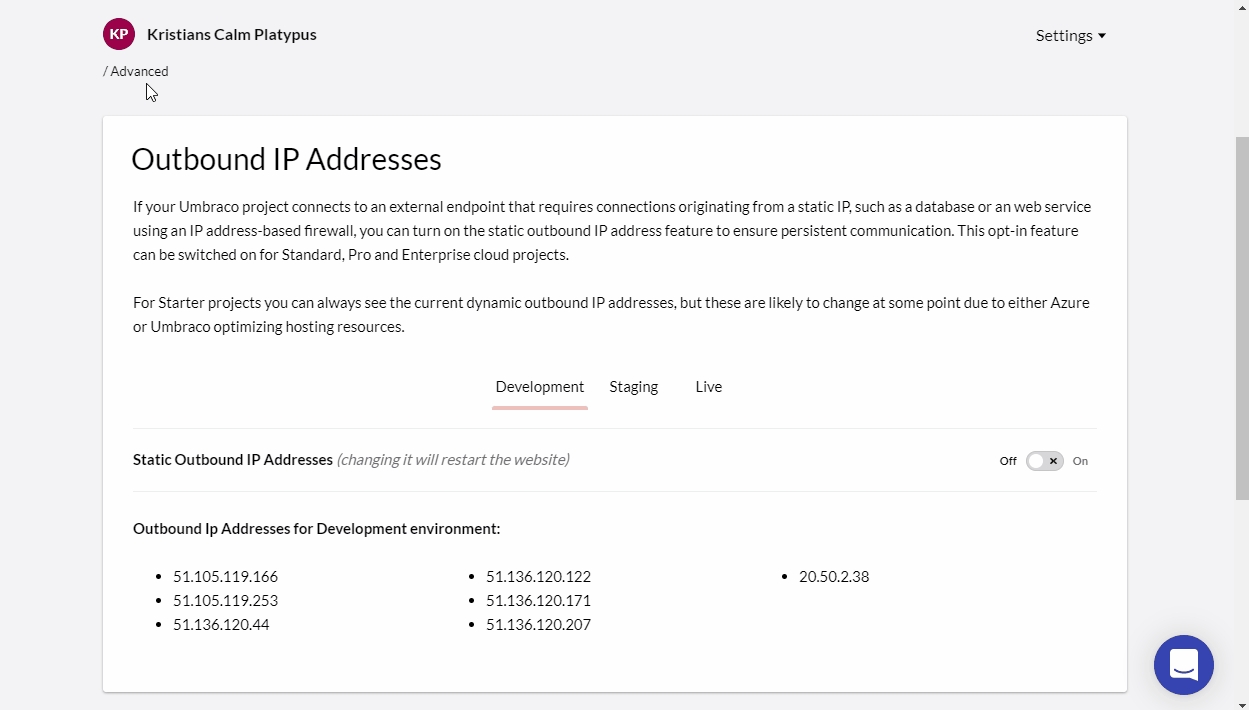External Services
In some cases, Umbraco Cloud might not be the only service you are working with. You might need to work with other services as well. This could be either internal or third-party services. In either case, it will be serviced externally to Umbraco Cloud.
If an external service behind a firewall needs to communicate with your Umbraco Cloud project, allow Umbraco Cloud Server IPs to bypass the firewall.
For example, to retrieve information from an external service that is located behind a firewall, you must grant access to your Umbraco Cloud project. To do this, add the IP addresses used by Umbraco Cloud servers to an allowlist.
Enabling static outbound IP addresses
For projects on a Standard, Professional, and Enterprise plan you can enable static outbound IP addresses.
On the Advanced page of your project, you can turn on the static outbound IP address feature to ensure persistent communication. This opt-in feature can be switched on for Standard, Professional, and Enterprise Cloud projects.

The static outbound IP ranges vary per region. Below are the values per region in a Classless Inter-Domain Routing (CIDR) notation. The expanded IP ranges can be calculated by using online tooling.
West Europe
UK South
US East
Australia East
If you need to use a CIDR Range for the IPs: 40.113.173.32/28
Complete IP Address Reference
For a comprehensive list of all static outbound IP addresses used by Umbraco Cloud services across all regions, including both global and regional services, see Static Outbound IP Addresses for Umbraco Cloud.
Last updated
Was this helpful?